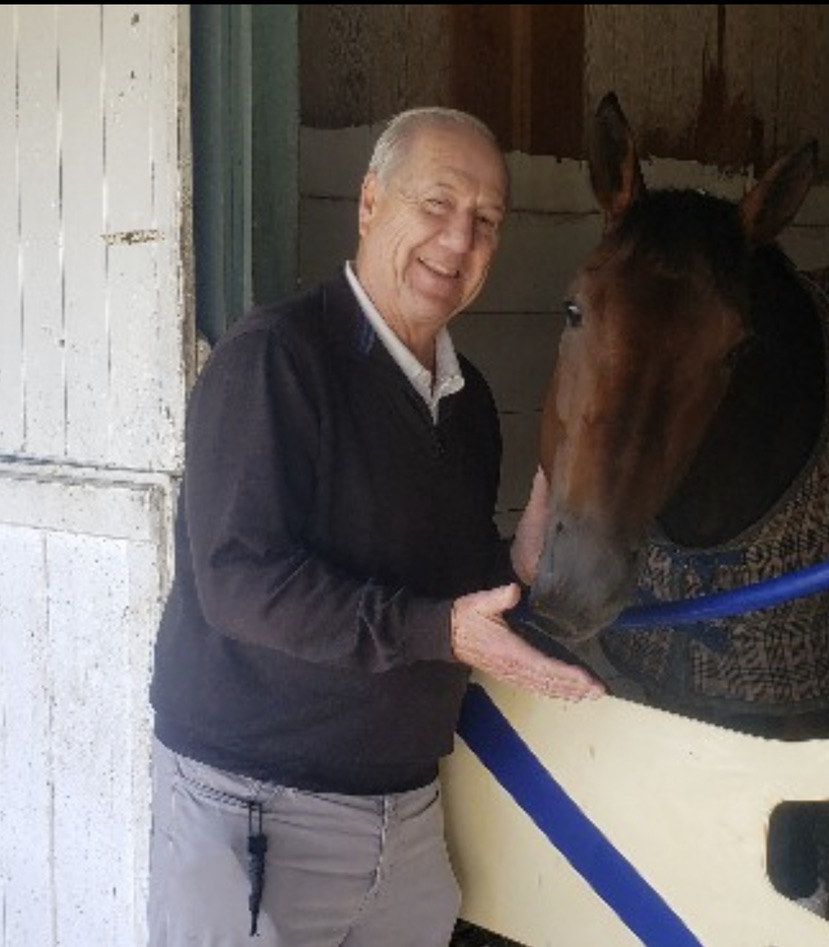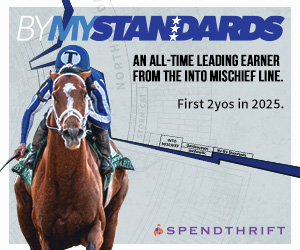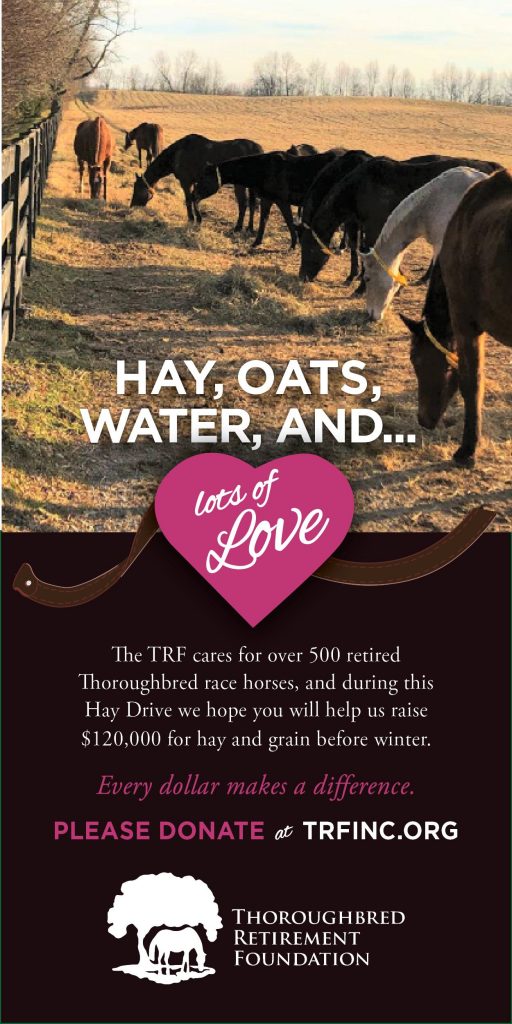
By Tere Albanese
If you want to catch up with Neil Drysdale, you better be able to keep up with him. Drysdale is stabled in a quiet barn at Santa Anita, about 1/8th of a mile west of Clockers Corner, which Drysdale passes by rapidly to go beyond the wire, (another 1/16th of a mile) and up into the stands where he watches every one of his horses with binoculars. His Longtime assistant, John O’Donoghue, also follows each horse to the track and watches them perform, and there are a lot of horses. At any given time, there are 30 to 40 horses in Drysdale’s barn.
A native of the United Kingdom, Drysdale started training thoroughbreds in the United States in 1974. He has been training for 47 years. Oddly enough, he never trained in the UK.
“I started training here in the United States, for a long time as a private trainer for Sarin Stables. Prior to Sarin Stables, I trained with Charlie Whittingham, where I left after four years.”
Sarin Stables was owned by Corbin Robertson, who was in the mining business. One of the best horses that Drysdale trained for Sarin Stables was Bold n’ Determined, who earned $949,599.00 within three years between 1979 to 1981.
How did you get in Whittingham’s barn?
“I had been working for Roger Laurin, the son of Lucian Laurin, in New York, and I came to California specifically to work with Charlie.”
Did you exercise thoroughbred horses?
“No, I showed jumpers in Florida. I rode jumpers in the U.S. for two years, and then I switched to thoroughbreds.”
How did you become an assistant trainer for Charlie?
“I just followed him until he hired me.”
What did you learn from Whittingham?
“One of the things that I learned from Charlie is that a horse doesn’t mature until they’re five years old. Charlie was an articulate man, which made him a good teacher.”
Whatever moves Drysdale took, must have been the right ones. Let’s take a look at what this Hall of Fame Trainer has accomplished.
In 1975 Drysdale earned $381,689. In 1990 he earned $808,388. In 1984 his winnings jumped to 2.5 million. In 1985 they reached 2.7 million dollars. In 1989 they climbed to 5.5 million dollars. In 1992 he earned 4 million. Earnings wavered between over one million to two million until 1998 when his earnings jumped to 6.6 million. His earning totals from 1975 to date is $101,989,928. His average yearly winnings to date are $2.3 million. Drysdale has an 18%-win average and a 47%-in the money (win, place and show) average. That’s Hall of Fame material.
In 2000 Drysdale was inducted into the Hall of Fame. The year 2000 was quite spectacular for Drysdale. He won the Kentucky Derby and placed second in the Preakness, both with Fusaichi Pegasus. Fusaichi Pegasus earned $1,994,400. Also, in 2000 Drysdale won the Breeders’ Cup Mile with War Chant.
None of these accomplishments went unnoticed. Drysdale came in 7th place in earnings in the country for the year 2000. Drysdale remained in the top 100 money winners in the nation consecutively all the way to 2010, and to 2019 has not earned anything less than a million dollars. For the year 2020 Drysdale’s earing is $843,611.
Drysdale won the Belmont in 1992 with A.P. Indy. And won it again in 2002 with Sunday Break.
Let’s talk about his Breeders’ Cup accomplishments: Drysdale has won six of the Breeders’ Cup races, ran second five times and third five times.
Drysdale has seen the changing of the racing industry.
What is different now in the industry compared to when you started? Is it better or worse?
“Oh, my goodness. It’s completely different. There are many factors. First of all, racing was the only gambling in town. So, there was a monopoly. Secondly, when I first started there wasn’t that much money. The purse money wasn’t that much. The horses didn’t cost that much. Then, in the 80s, it started to get more expensive and the purses started to go up. The horses were more valuable, the purses went up.”
How does that compare with races in Europe? Have the purses gone up there?
“On big racing days they have big purses, but on a regular day the purses are not that much.”
Do you think long races are easier on the horses, better for the soundness of horses, and if so, do you think that the racetracks should have more long races?
“Yes, I think it’s easier on the horses. And the longer races are much more fun to watch.”
Do you think that there should be uniform rules and regulations? Or the rules and regulations should be the same as other racetracks?
“I think we should do what they do in the rest of the world.”
What would that be like? Do they use many drugs in Europe?”
“No. In other parts of the world there is no Lasix. As you know, it’s being phased out here. I just think that we follow the international rules. This way everybody would have the same rules. Especially, now there is more international racing.”
How do you train horses to go short and long?
“I think it’s like any athlete, whether you are running them a distance, or sprinting them, is that they are relaxed. It has to do athletic prowess.”
What do you look for in an exercise rider?
“Hands, soft hands.”
Does it matter if it’s a man or a woman?
“No, not at all. Soft hands and compassion for the horses.”
Who do you think are the best jockeys here at Santa Anita?
“I think Joel Rosario is a brilliant rider, Flavien Prat and Umberto Rispoli are doing really well.”
Do you have one horse that put you on map? When did you win your first big race?
“Probably Forceten, winning the Grade I, Sweepstakes at Hollywood Park.”
Do you have horses running sound up into their 7th or 8th year?
“Look up, Sarafan.”
I looked up Sarafan. He ran into his seventh year, and earned $2,621,881.
Like most accomplished thoroughbred trainers, there is no retiring date for this trainer.
A gambler should never discount Neil Drysdale horses.
Photo: Tere Albanese




